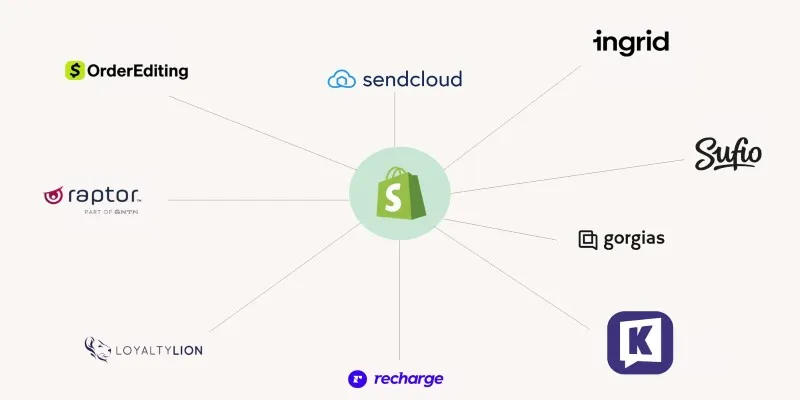How to Publish Your Plugin on the WordPress Plugin Directory
Adding your plugin to the WordPress repository is a fantastic way to share your work with the global WordPress community. This comprehensive guide will walk you through the process, ensuring your plugin meets all necessary requirements and is ready for publication. Follow these steps to make your plugin easy to discover and use.
Step 1: Prepare Your Plugin for Submission

Before submitting, your plugin must adhere to WordPress coding and security standards. This includes:
1. Proper File Structure
Ensure your plugin has an organized structure. A typical plugin folder includes:
plugin-name.php: Main plugin filereadme.txt: Required for WordPress listing/assets: Optional but recommended for banners and screenshots/includes,/admin,/public: For structured code organization
2. Follow WordPress Coding Standards
Stick to PHP, JavaScript, and CSS standards as outlined in WordPress’s Coding Guidelines.
3. Sanitize and Validate Inputs
To maintain security, always sanitize user inputs and validate data properly using WordPress functions like sanitize_text_field() and wp_verify_nonce().
4. Test Thoroughly
Ensure your plugin works across various WordPress versions and themes. Debugging tools like Query Monitor and Debug Bar can help.
Step 2: Create a Comprehensive readme.txt
The readme.txt file is critical because it feeds content directly into your plugin’s WordPress.org page.
Required Sections:
- Plugin Name: Clear and descriptive
- Contributors: Your WordPress.org username
- Tags: Relevant keywords
- Requires at least: Minimum WordPress version required
- Tested up to: The latest WordPress version you’ve tested it with
- Stable tag: Matches the version number of your main plugin file
- Description: Explain what the plugin does
- Installation: Step-by-step instructions
- Frequently Asked Questions: Help users understand common queries
- Changelog: Document version history
- Screenshots: Visual previews (if using the
/assetsfolder)
Use the WordPress Plugin Readme Validator to check for formatting issues.
Step 3: Ensure Licensing Compliance
Your plugin must be licensed under the GNU General Public License v2 or later (GPLv2+), ensuring it aligns with open-source standards and promotes software freedom. Verify the licensing terms of any third-party components you use to maintain consistency and avoid legal issues.
It’s important to avoid including any code, images, fonts, or other resources that violate copyright laws or license agreements, as this could lead to potential disputes or the removal of your plugin. Ensuring full compliance with licensing requirements protects your work and builds trust and credibility with your users.
Step 4: Create a WordPress.org Account
If you don’t already have a WordPress.org account, you’ll need to create one at wordpress.org. This account is essential for submitting and managing your plugin, as it connects you to the WordPress community and provides access to valuable developer tools.
When creating your account, take the time to fill out your profile completely and ensure it appears professional. A well-crafted profile not only builds trust but also reflects your expertise, as users often check the plugin author’s profile to learn more about the person or team behind the plugin. This is a great opportunity to showcase your skills and credentials!
Step 5: Submit Your Plugin for Review
Once your plugin is ready, submit it at: WordPress Plugin Developer Center.
You’ll need to:
- Upload a ZIP file of your plugin
- Include the main plugin file and the
readme.txt - Wait for the review process
Plugin Review Process:
- The review team manually checks your code for security, compliance, and functionality.
- You’ll typically hear back within a few days.
- If changes are requested, respond promptly and resubmit.
Step 6: Set Up Your SVN Repository
Once approved, you’ll get access to your own Subversion (SVN) repository hosted by WordPress. Use it to upload your plugin files and manage versions.
1. Install SVN Tools
You can use command-line tools or applications like TortoiseSVN (Windows) or Cornerstone (macOS).
2. Understand the Folder Structure
Your SVN repository includes:
/trunk: Main development version/tags: Versioned releases (e.g.,/tags/1.0)/branches: For experimental or development versions
3. Initial Commit
Add your plugin files to the /trunk folder and commit using your SVN client. Don’t forget to include the readme.txt.
Example command (for the command line):
svn import . https://plugins.svn.wordpress.org/your-plugin-slug -m "Initial commit"
Step 7: Upload Assets for Plugin Page
The plugin repository allows you to upload images and banners for better visual appeal.
Image Guidelines:
- Banner:
banner-772x250.jpgorbanner-1544x500.jpg - Screenshots: Add numbered image files like
screenshot-1.png - Place these in the
/assetsdirectory at the root of your SVN repo (not inside/trunk)
This enhances the plugin page and gives users a visual sense of what to expect.
Step 8: Tag Your First Release
Once files are committed to /trunk, create a version tag under /tags.
Example:
svn copy trunk tags/1.0
svn commit -m "Tagging version 1.0"
This ensures that your plugin’s stable tag matches your release version.
Step 9: Keep Your Plugin Updated
Maintaining your plugin is just as important as releasing it. Make sure to:
- Respond to support questions
- Push regular updates
- Update the “Tested up to” field with each WordPress release
- Address bugs and security issues promptly
Consistent updates and active support increase user trust and retention.
Step 10: Promote Your Plugin

Once your plugin is live, promote it across your website, social media, and developer communities.
Other ideas include:
- Writing a blog post explaining the plugin
- Creating a video tutorial
- Offering documentation or FAQs
Engagement drives downloads, ratings, and feedback that improve your plugin’s credibility.
Why Submit to the WordPress Repository?
Submitting your plugin to the WordPress Plugin Repository offers several key benefits:
- Increased Visibility: Millions of WordPress users regularly search the plugin repository, giving your plugin the opportunity to reach a vast audience. This increased exposure can help drive downloads and build a strong user base.
- Built-in Update Mechanism: The WordPress repository ensures users automatically receive updates for your plugin whenever you release a new version, making it easier to keep your users on the latest, most secure version without extra effort.
- Community Trust: Being listed in the official WordPress repository enhances your plugin’s credibility. Users are more likely to trust and download plugins that are hosted on the platform because it signals quality and security.
- Version Control: The repository uses Subversion (SVN) for version control, allowing you to effectively manage changes, roll back to previous versions if needed, and maintain an organized development process.
Conclusion
Adding your plugin to the WordPress Plugin Repository isn’t just a technical process—it’s a way to share value with a global community. By following the steps outlined above, you ensure your plugin is professionally packaged, well-documented, and accessible to thousands of users worldwide.
On this page
Step 1: Prepare Your Plugin for Submission Step 2: Create a Comprehensive readme.txt Step 3: Ensure Licensing Compliance Step 4: Create a WordPress.org Account Step 5: Submit Your Plugin for Review Step 6: Set Up Your SVN Repository Step 7: Upload Assets for Plugin Page Step 8: Tag Your First Release Step 9: Keep Your Plugin Updated Step 10: Promote Your Plugin Why Submit to the WordPress Repository? ConclusionRelated Articles

How to Develop a WordPress Plugin Using Best Practices

The Ultimate Guide to the 10 Best WordPress Admin Dashboard Plugins

Best Free Slideshow Plugins for WordPress in 2025

How to Move Comments Between WordPress Posts: A Quick and Easy Guide

Tips to Password Secure Your WordPress Without User Registration

Keep Your WordPress Plugins in Check for Optimal Performance

A Step-by-Step Guide to Adding Google Authenticator 2FA to WordPress

7 Best WordPress Help Desk Plugins for Superior Customer Support

The Ultimate Guide: 16 Best Plugins to Improve WordPress Comments (2025)

How to Add Facebook Recommendation Bar in WordPress: A Step-by-Step Guide

How To Add An Advanced Search Box In WordPress Using Facetious: A Guide

A Comprehensive Guide to Better Manage WordPress Pages with Nested Pages Plugin
Popular Articles

Slack vs. Teams: Which Should Your Business Use for Better Collaboration

7 Reliable Methods to Convert Video Files into RM/RMVB

The 13 Best Shopify Apps in 2025 to Boost Your E-commerce Game

OBS Screen Recorder Review: Is It the Ultimate Tool for Your Needs?

Free Ways to Convert HEVC to MP4 Without Losing Quality

How to Make a Creative Instagram Story Using Photo and Video Collages

5 Best Free Stop Motion Apps for Beginners and Pros

Find Your Ideal Photo Editing Software: 7 Lightroom Alternatives to Consider

6 Best Tools to Create Stunning Animated Videos with Ease

The 5 Best Hootsuite Alternatives in 2025 for Easier Social Media Management

Simple Ways to Record a Teams Meeting: Built-in and Other Options

 mww2
mww2